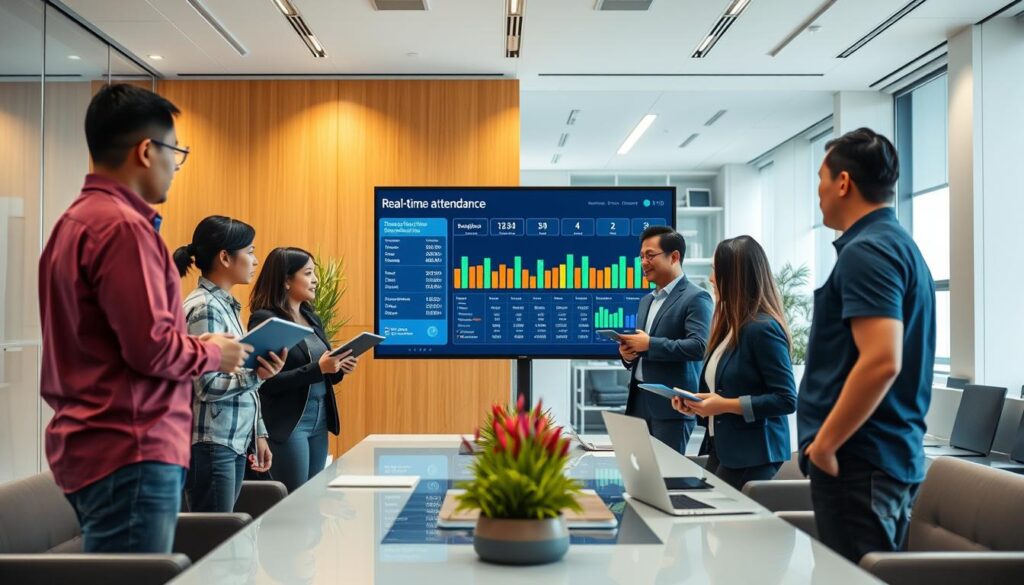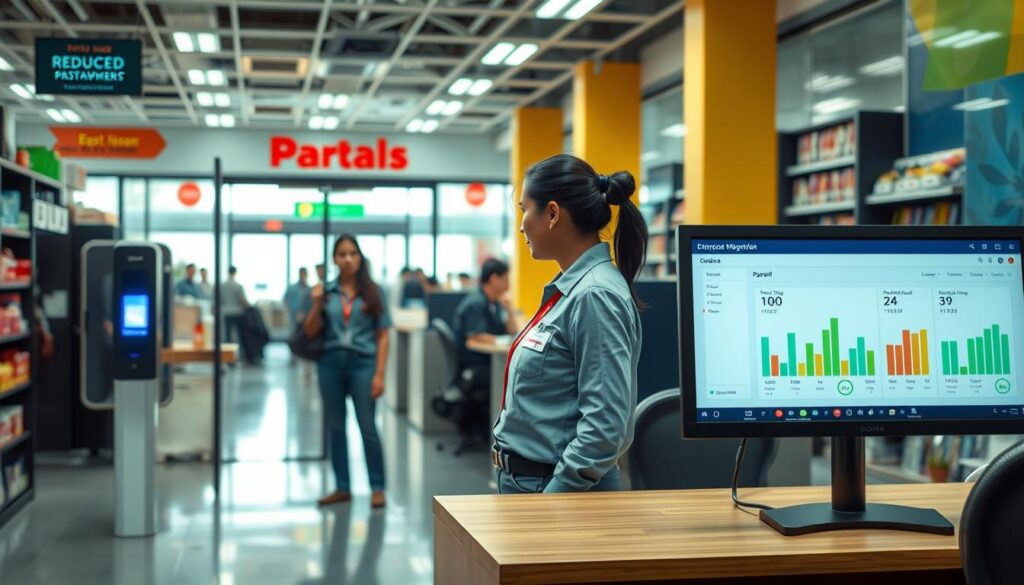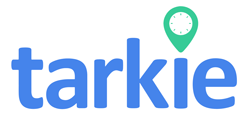Ever thought about how employee attendance systems affect payroll accuracy? In the Philippines, businesses are using more technology. This makes real-time attendance data very important. Systems that update attendance instantly help avoid errors from manual entry.
Using real-time payroll tech, like biometric systems, helps follow labor laws better. It also makes payroll more accurate.
Real-time attendance systems cut down errors by 80% and boost efficiency by 25%. They are not just a trend. They are key for small and medium businesses to work better and fairly.
Key Takeaways
- Real-time attendance systems update records immediately, ensuring accurate workforce presence.
- Biometric technologies significantly reduce attendance fraud and unauthorized access.
- Integration of attendance data with payroll systems can decrease payroll discrepancies by around 50%.
- Automated alerts for tardiness aid in prompt intervention for absenteeism.
- Mobile accessibility allows 70% of remote organizations to leverage real-time attendance effectively.
The Importance of Accurate Payroll
Accurate payroll is key for happy employees and smooth operations. Mistakes in payroll can cause money problems, lower morale, and lead to legal issues. It’s known that about 20% of payroll costs can be lost to time fraud, showing the need for good attendance tracking.
Using an automated payroll system can cut down on errors and improve accuracy. These systems collect data in real-time, reducing mistakes and keeping payroll finances sound. By linking payroll and attendance systems, manual work is reduced, making HR work more efficient.
When payroll is clear and efficient, employees trust their company more. Automated attendance tracking helps follow rules and can lower absences. Moving away from manual systems can cut paperwork by up to 80%, freeing managers to work on big goals.
- Real-time insights into attendance trends can empower management to proactively address issues of tardiness and absenteeism.
- Centralization of payroll and attendance data enhances accuracy, even for companies with different types of employees like white-collar staff and gig workers.
- Self-service features can boost employee trust by letting staff check their attendance and payment details.
In today’s world, accurate finances are crucial for employee trust and happiness. Investing in modern payroll solutions is essential for any growing business.
Understanding Real-Time Payroll
Real-time payroll means processing payroll data right away. This lets businesses quickly figure out wages based on hours worked. By linking real-time payroll with attendance systems, companies can make payroll more accurate.
This quick update helps HR see employee attendance right away. This is key for fast and accurate payroll processing.
Automated systems are important in cutting down on manual entry mistakes. These mistakes often cause a big part of payroll errors. Companies using biometric systems can stop “buddy punching” and unauthorized overtime.
This strong attendance management can cut payroll errors by up to 80%. It’s all thanks to automation in calculation processes.
Many businesses have seen a 30% drop in scheduling time with automated solutions. This shows how real-time payroll makes things more efficient. Advanced systems also keep leave balances right, cutting leave errors by about 25%.
These systems also save HR a lot of time on data analysis. They promise to save more than 50% in some cases.
Mobile apps for tracking time make employees stick to their schedules better. This leads to higher productivity. A good time and attendance system makes payroll easier and helps follow labor laws.
This avoids big fines, up to $10,000 for wage law breaks. It also helps manage resources better by tracking attendance well.

How Real-Time Attendance Data Improves Payroll Accuracy
Real-time attendance data is key to better payroll accuracy and efficiency. Modern attendance tracking systems help cut down on errors. This makes payroll calculations more reliable, building trust for everyone.
Reduction of Manual Entry Errors
Automated payroll systems linked to real-time data cut down human errors by 30%. This means payroll accuracy can jump by up to 95%. Such accuracy makes payroll processes smoother and boosts trust among employees.
Enhancing Trust and Satisfaction Among Employees
When pay matches work hours, employees are happier. Real-time payroll systems show employees their attendance records, showing the company’s honesty. This trust leads to better morale and productivity.
Implementing Biometric Attendance Systems
Businesses are looking for ways to work better. They’re turning to biometric attendance systems. These use advanced tech like fingerprints or facial scans. They make tracking attendance accurate and secure. Filipino companies see big wins in using these systems for better payroll.
Benefits of Biometric Systems in Attendance Tracking
Biometric systems solve many problems of old attendance methods. They bring:
- Secure time tracking: Fingerprint or facial scans boost security and cut down on unauthorized access.
- Reduction in attendance errors: No more buddy punching means fewer mistakes in tracking, making payroll more accurate.
- Real-time data availability: Records update instantly, helping employers track hours and simplify payroll.
- Cost savings: Biometric systems can cut down on admin costs and time fraud, saving 5-10% on payroll.
- Minimal processing time: They can check identities in under a second, making admin work much faster.
Case Study: Filipino Companies Utilizing Biometric Attendance
Many Filipino companies in various fields have adopted biometric systems. They’ve seen big improvements in how they work. For example, a big retail chain cut its payroll time way down with biometrics. This case study shows:
| Company Sector | Key Benefits | Payroll Accuracy Improvement |
|---|---|---|
| Retail | Less time theft and admin costs | Improved by 15% |
| Hospitality | More employee accountability | Improved by 10% |
| Consulting | Instant data access | Improved by 12% |
More companies are using biometric systems. They see the benefits for tracking attendance well and following labor laws.

Integrating Time and Attendance Software with Payroll Data
Linking time and attendance software with payroll systems is key for payroll data accuracy. It cuts down on manual data entry, lowering errors. Manual entry can lead to about 20% errors in tracking and payroll.
Automated payroll systems help businesses save up to 30% in time on payroll tasks. Real-time attendance tracking boosts wage accuracy to over 95%. This is because attendance data flows directly into payroll.
Companies using these systems save about $1,000 per employee each year. This is due to the automation of tasks that were once done by hand.
These systems also help reduce legal issues by 50% with automated checks. They offer real-time reports, speeding up decision-making by 25%. This leads to a 15% boost in administrative efficiency.
Self-service portals for attendance and payroll cut HR inquiries by 40%. This lets HR teams focus on more important tasks. Accurate and timely payments also boost employee satisfaction by 15%.
| Benefit | Statistic |
|---|---|
| Reduction in manual entry errors | Up to 80% |
| Increase in payroll accuracy | 98% or higher |
| Administrative time reduced | 30% |
| Cost savings per employee | Average of $1,000 |
| Reduction in legal compliance issues | 50% |
| Improvement in employee satisfaction scores | 15% |
Key Features of Effective Attendance Management Systems
Effective attendance management systems have key features that boost efficiency and ensure payroll accuracy. Real-time data capture and automated reporting are crucial. They make tracking attendance easier and provide valuable insights into managing the workforce.
Real-Time Data Capture
Real-time data capture is a big plus for attendance systems. It lets employees clock in and out right away. This cuts down on errors in attendance records.
It also makes payroll more accurate. This is important for keeping employees happy and trusting the system. After all, accurate attendance affects how much they get paid.
Automated Reporting and Analytics
Automated reporting and analytics are key for making better decisions. These systems create reports on attendance and other important metrics automatically. This saves time and effort.
Leaders can use these insights to spot trends and improve attendance. This leads to smarter decisions that boost productivity.

| Feature | Benefit | Impact on Payroll |
|---|---|---|
| Real-Time Data Capture | Immediate recording of attendance | Ensures accurate payroll calculations |
| Automated Reporting | Saves time and reduces errors | Provides clear payroll insights |
| Attendance Analytics | Identifies attendance trends and issues | Enhances workforce management strategies |
| Payroll Integration | Facilitates seamless data transfer | Reduces discrepancies in payroll processing |
Challenges Faced by SMEs in Attendance Tracking
Small and medium enterprises (SMEs) face big challenges in tracking attendance. They often use manual systems because they don’t have many resources. This can lead to problems with payroll and unhappy employees.
Common Payroll Mistakes Due to Time Tracking Errors
Tracking errors can cause big problems with payroll. Manual attendance tracking systems are prone to mistakes. These mistakes can lead to pay issues and unhappy employees.
Time theft is also a big problem. It’s hard to catch when employees don’t work the hours they say they do. This can make payroll costs too high.
Solutions to Overcome Attendance Management Issues
To solve these problems, SMEs should use automated attendance tracking. These systems make payroll more accurate and save time. They also help avoid errors.
By linking time tracking with payroll software, companies can do better. This makes payroll work more efficient. It also helps HR teams focus on important tasks.
Training and clear rules are also key. They help make attendance records more accurate.
| Issue | Impact | Automated Solution Benefits |
|---|---|---|
| Manual tracking errors | Payroll discrepancies, employee disputes | Improves data accuracy, reduces error likelihood |
| Time theft | Increased payroll costs | Detects inconsistencies easily, reduces incidence |
| Administrative burden | Strain on HR teams, reduced strategic focus | Streamlines processes, frees up HR time |
| Compliance risks | Legal penalties, reputational damage | Ensures adherence to labor laws, minimizes risk |
| Disorganization | Cluttered paperwork, lost data | Organized digital records, easy access to information |
Best Practices for Employee Attendance Tracking
Using the best methods for tracking employee attendance can really help your business run smoothly. Old ways like paper timesheets can lead to mistakes, like people clocking in for each other. Switching to automated systems can cut down on these errors by half. It also saves a lot of time, about 1-2 hours each week for every employee.
It’s key to have clear employee attendance policies. These should cover how to clock in and out, taking breaks, and asking for overtime. When employees know how important it is to report accurately, they make fewer mistakes, by 35%. Letting them use self-service portals can make them more responsible, raising attendance by about 20%.
Checking attendance records regularly is very important. It can find mistakes in attendance up to 15% of the time. Automated systems give you instant access to data, cutting down on payroll errors by up to 45%. By linking attendance and payroll systems, you can report more efficiently, by 40%. You’ll also save money on fines, up to 40%, because of automated overtime and holiday pay calculations.
To manage attendance well, follow these best practices:
- Use AI-driven attendance systems to make payroll more accurate, cutting errors by 30% or more.
- Choose advanced biometric solutions to cut down on attendance fraud, up to 99%, keeping your workplace safe.
- Do predictive analytics to make workforce planning better, helping you adapt to changing staffing needs.
Compliance with Labor Laws and Payroll Regulations
Understanding labor laws and payroll rules is key for fair workplaces. Keeping accurate attendance data helps with payroll and avoids legal trouble. Good workforce management means accurate hours, avoiding wage disputes.
The Role of Attendance Data in Legal Compliance
Using reliable attendance data makes following payroll rules easy. It helps track hours, meeting both local and federal laws. Regular checks of attendance data boost compliance and payroll integrity.
Automated time-tracking cuts down on paperwork, making businesses more efficient. It also helps with accurate pay, which is crucial for following labor laws. Clear policies lead to fewer disputes, up to 25% less.
Biometric systems improve time tracking, reducing time theft. This builds trust and keeps employees happy. Training on compliance rules also helps, making operations smoother.
| Benefit | Description | Impact on Compliance |
|---|---|---|
| Automated Time Tracking | Reduces administrative workload and enhances payroll processing. | Increases accuracy of payroll data, minimizing the risk of errors. |
| Biometric Time Clocks | Improves accuracy of clock-in/out times, reducing time theft. | Enhances trust among employees and ensures fair compensation. |
| Regular Data Audits | Identifies discrepancies in time-tracking data on a consistent basis. | Supports proactive compliance with labor laws. |
| Employee Training | Equips staff with knowledge about compliance requirements. | Leads to a reduction in non-compliance issues. |
Real-time attendance systems improve efficiency and compliance. This approach strengthens workforce management. It ensures fair treatment for employees and protects the company’s reputation.
Future Trends in Payroll Accuracy and Attendance Systems
Technology keeps getting better, leading to big changes in payroll and attendance systems. The focus will be on using new tech to make things more efficient. The global biometric system market is expected to hit USD 73.3 billion by 2027. This growth is thanks to better payroll accuracy tools and new attendance system ideas.
Real-time solutions are becoming more popular, with automated systems cutting down on mistakes. Manual timekeeping can have error rates of 1-8%. But, biometric systems can lower payroll inflation by up to 4% by tracking hours accurately. Companies using these systems see a 33% drop in payroll errors and a 22% increase in productivity.
Future attendance system updates will include AI for better predictions and user experience. Cloud-based systems will also be key for real-time monitoring of attendance data. This is crucial for keeping up with rules and improving payroll processes.
The gig economy and more remote work mean we need flexible payment options. Payroll systems need to adapt to these changes while keeping accuracy high. Companies with cloud payroll systems get instant access to their data, making things more efficient.

As companies adopt these new technologies, they’re setting the stage for better payroll and attendance management. Using the latest tech in attendance systems shows they’re ready to handle the challenges of today’s work world.
Conclusion
Real-time attendance data is key for businesses aiming for payroll accuracy. In the Philippines, biometric attendance systems help a lot. They cut down on manual errors and time theft.
Employers see less payroll fraud, making employees happier and more trusting. This is a big win for everyone.
Biometric systems also help with attendance integration, keeping businesses in line with labor laws. They track hours, breaks, and overtime well. This is great for managing the workforce.
While it costs money upfront, the savings later on are huge. It’s a smart move for the long run.
Using biometric attendance systems is a must for businesses wanting to stay ahead. They make payroll management better and more accurate. This leads to a culture of responsibility among employees.
By adopting these systems, SMEs can thrive in today’s fast-changing business world. It’s a step towards success.
